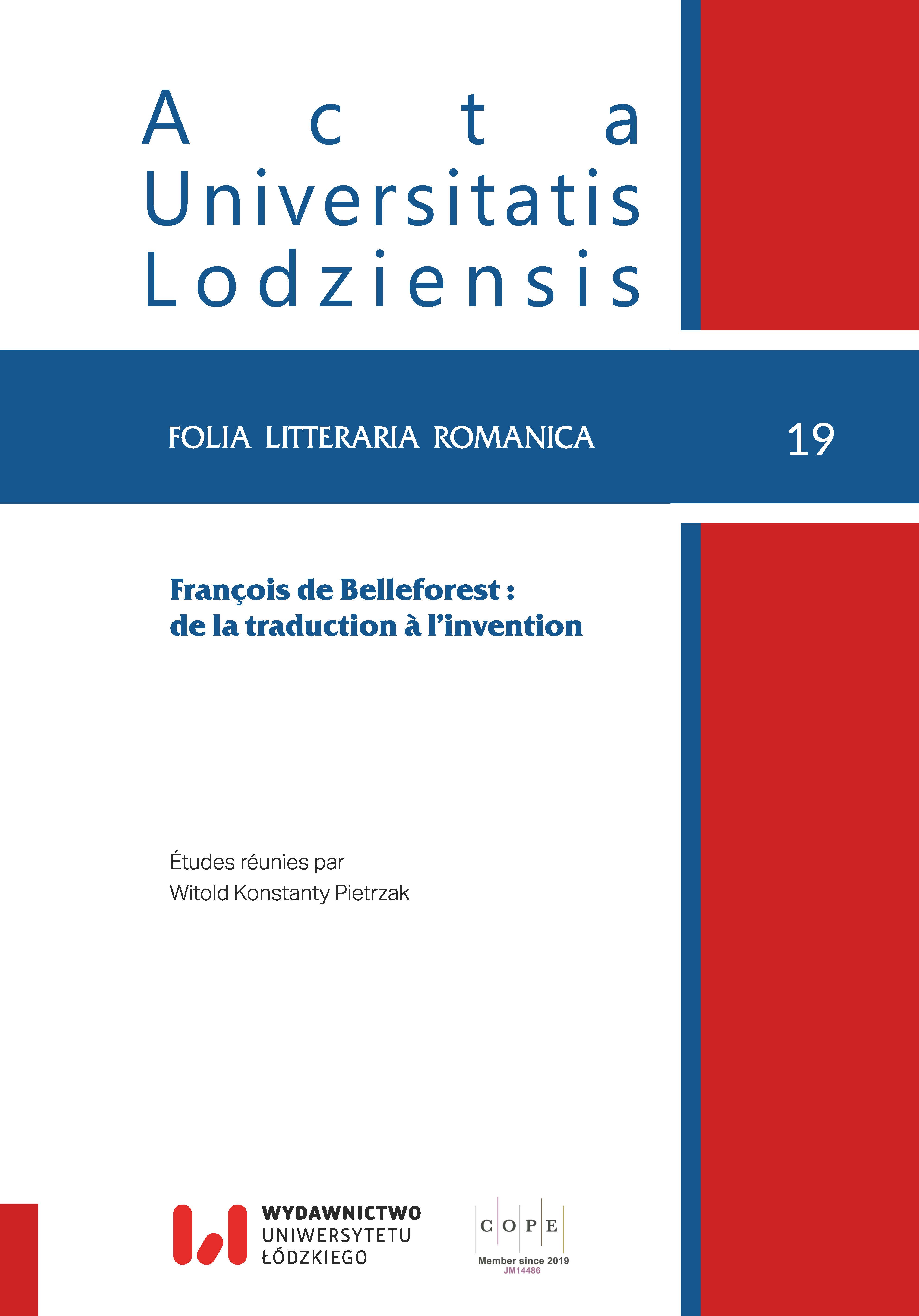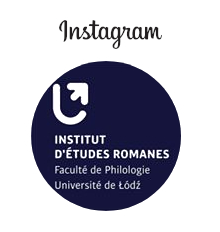The Uterus in Medical Discourse Between 1599 and 1626 in France: Physician, Surgeon, Midwife
DOI:
https://doi.org/10.18778/1505-9065.19.13Keywords:
history of medicine, French medical discourse between 1599 and 1626, anatomy, woman, uterus, doctor, surgeon, midwifeAbstract
Our article is devoted to the female body and the uterus in particular, represented in an ambiguous way in the French medical discourse between 1599 and 1626. This discourse emanates from the doctor, the surgeon and the midwife at the same time. First, we analysed the passages dealing with the uterus transmitted by academic medicine. This literature has allowed us to measure the weight of the medical tradition in questions relating to procreation, where the uterus appears as the most mysterious organ of the female body. We then looked at the work of Ambroise Paré (1510-1590), a physician and surgeon who not only presented the means of relieving women during childbirth, but also instructed midwives on how to deal with various complications. Finally, we have studied some of the Observations of the midwife Louise Bourgeois (1563-1636) who could claim a real familiarity with the female body and with the problems arising during and after childbirth. After comparing these different discourses, we can conclude that the figures of the doctor, the surgeon and the midwife were all strongly influenced by the knowledge inherited from Antiquity. However, views vary within this medical hierarchy, as do the terms, recommendations and topics discussed. Each of the representatives, according to their rank and the contact they actually had with the female body, elaborated a discourse whose stakes undoubtedly went beyond the fate of the parturients.
Downloads
References
Bourgeois, Louise, Les Observations diverses, livre I-III, Paris, Melchior Mondiere, 1626
Google Scholar
Cabrol, Bathelemy, Alphabet anatomic auquel est contenue l’explication exacte des parties du corps, Lyon, Pierre Rigaud, 1621
Google Scholar
Du Laurens, André, Des parties genitales, in Toutes les oeuvres, traduit par Théophile Gelée, Rouen, pour Raphael du Petit Val, 1621
Google Scholar
Paré, Ambroise, Des monstres et prodiges, édition critique et commentée par Jean Céard, Genève, Droz, 1971
Google Scholar
Paré, Ambroise, Les OEuvres, Paris, Gabriel Buon, 1599
Google Scholar
Berriot-Salvadore, Évelyne, « La question du “séminisme” à la Renaissance », Histoire des sciences médicales, 2017, no 51 (2), p. 265-272
Google Scholar
Berriot-Salvadore, Évelyne, Un corps, un destin. La femme dans la médecine de la Renaissance, Paris, Honoré Champion Éditeur, 1993
Google Scholar
Bodiou, Lidie, « Un récipient, un four ou un animal ? », in Utérus. De l’organe aux discours, sous la dir. de Morgan Guyvarc’h et Véronique Mehl, Rennes, Presses Universitaire de Rennes, 2022, p. 55-67
Google Scholar
Carol, Anne, Esquisse d’une topographie des organes génitaux féminins : grandeur et décadence des trompes (XVIIe-XIXe siècles), https://doi.org/10.4000/clio.590
Google Scholar
DOI: https://doi.org/10.4000/clio.590
D. Brancher, Y a-t-il une herméneutique féminine ? Les péripéties de la matrice dans l’oeuvre de Louise Bourgeois, https://doi.org/10.4000/books.lisaa.1213
Google Scholar
DOI: https://doi.org/10.4000/books.lisaa.1213
Gilles-Chikhaoui, Audrey, D’une voix l’autre : plaisirs féminins dans la littérature française de la Renaissance, https://central.bac-lac.gc.ca/.item?id=TC-OOU-30487&op=pdf&app=Library&oclc_number=1033225207, consulté le 19.11.2022
Google Scholar
Jahan, Sébastien, Les Renaissances du corps en Occident (1450-1650), Paris, Belin, 2004
Google Scholar
Koźluk, Magdalena, « ‘De Sectis’ : au delà des ‘sectes’ de l’Antiquité », Collectanea Philologica, 2006, IX, p. 221-233
Google Scholar
Koźluk, Magdalena, „Maiores et minores – między tradycją a nowoczesnością”, in Mistrzowie i uczniowie. Przekaz i dialog kulturowy w dawnych literaturach romańskich, éd. Joanna Dimke-Kamola, Anna Loba, Seria Filologia Romańska, 2015, no 53, Poznań, Wydawnictwo Naukowe UAM, p. 49-60
Google Scholar
Landuzy, Louis, Pépin, Roger, Le régime du corps de maître Aldebrandin de Sienne, Paris, Honoré Champion, 1911
Google Scholar
Lingo, Alison Klairmont, Connaître le secret des femmes : Louise Bourgeois (1563-1636), sagefemme de la Reine, et Jacques Guillemeau (1549-1613), chirurgien du Roi, https://doi.org/10.4000/books.apu.10966
Google Scholar
DOI: https://doi.org/10.4000/books.apu.10966
Morel, Marie-France, Sages-femmes et accoucheurs. Perspectives historiques, http://unssf.org/wp/wp-content/uploads/2018/08/MF-Morel_SF-accoucheurs.pdf, consulté le 10.03.2023
Google Scholar
Sage Pranchère, Nathalie, L’école des sages-femmes : Naissance d’un corps professionnel, 1786-1917, https://doi.org/10.4000/books.pufr.13196
Google Scholar
DOI: https://doi.org/10.4000/books.pufr.13196
Stofft, Henri, Une rétention de l’arrière-faix en 1609, https://www.biusante.parisdescartes.fr/sfhm/hsm/HSMx1987x021x002/HSMx1987x021x002x0065.pdf, consulté le 21.03.2023
Google Scholar
Teyssou, Roger, La Médecine à la Renaissance et évolution des connaissances, de la pensée médicale du quatorzième au dix-neuvième siècle en Europe, Paris, L’Harmattan, 2002, p. 104-111
Google Scholar
Worth-Stylianou, Valérie, « Conjurer la mort : sages-femmes, chirurgiens et médecins au service des parturientes pendant la Renaissance française », in Enfants De La Renaissance, dir. Caroline zum Kolk, cat. d’expos., Paris, Château royal de Blois, / In Fine éditions d’art, 2019, https://www.academia.edu/40254575/_2019_Conjurer_la_mort_sages_femmes_chirurgiens_et_médecins_au_service_des_parturientes_pendant_la_Renaissance_française, consulté le 03.03.2023
Google Scholar
Worth-Stylianou, Valérie, Les traités d’obstétrique en langue française au seuil de la modernité, Genève, Droz, 2007
Google Scholar
Downloads
Published
Versions
- 2024-09-16 (2)
- 2024-07-20 (1)
How to Cite
Issue
Section
License

This work is licensed under a Creative Commons Attribution-NonCommercial-NoDerivatives 4.0 International License.













